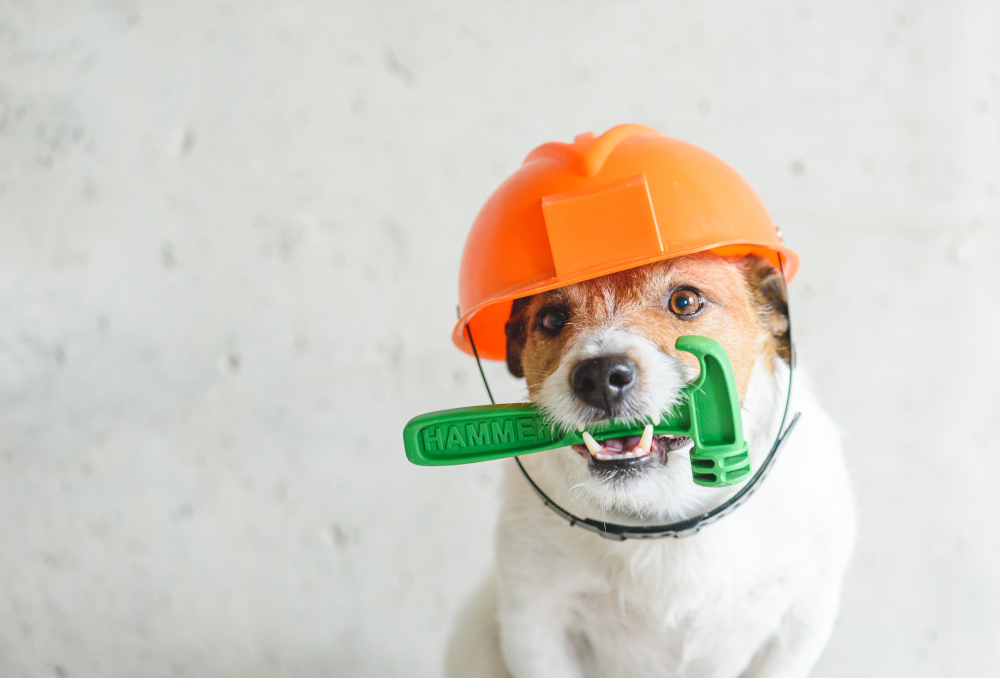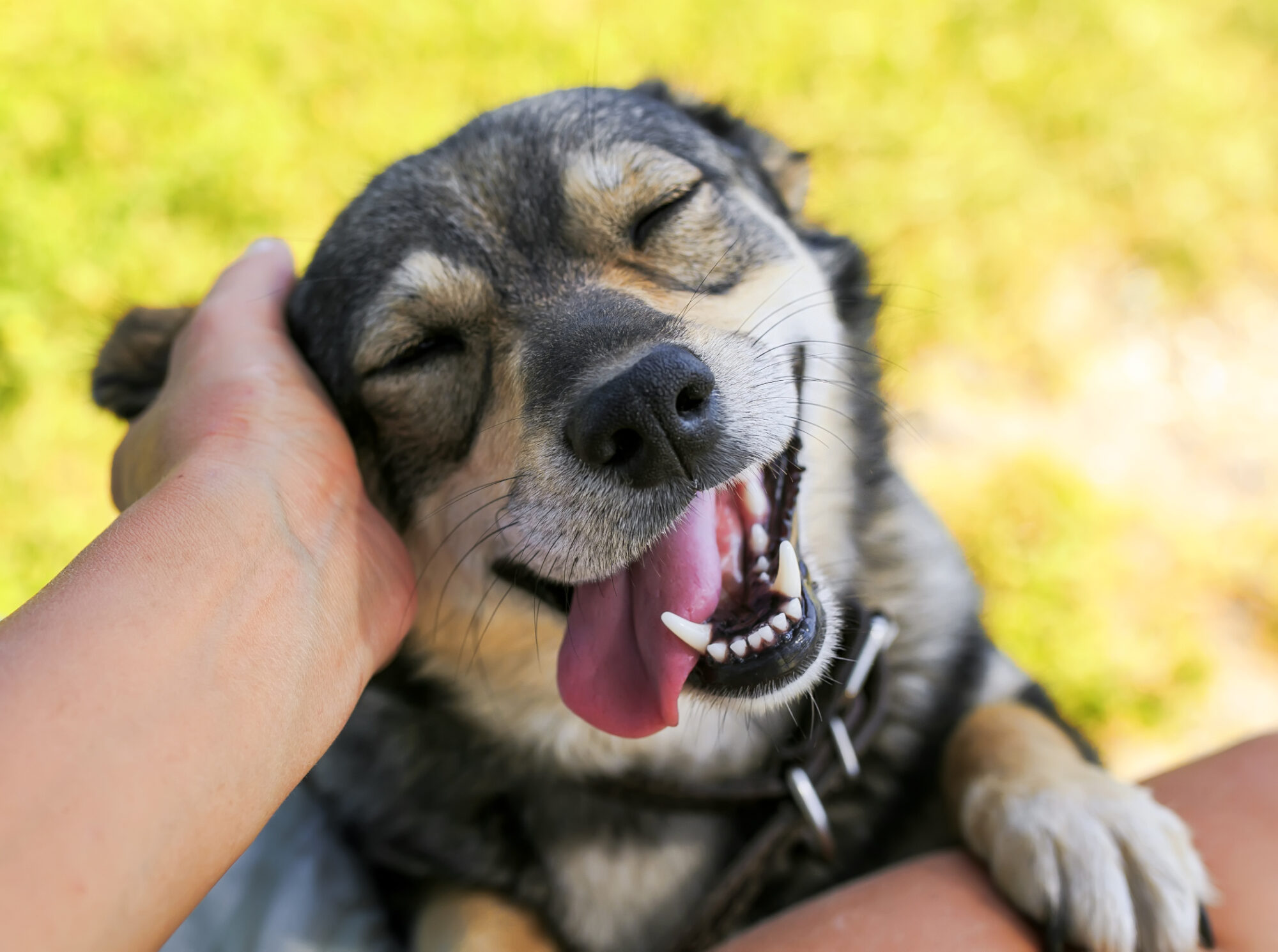
Summer and fall in our valley are prime times for construction projects, but with all the maintenance required for our mountain homes, other times of year are likely filled with drilling, concrete mixing, or hammering. Although these projects are necessary, they pose a particular safety risk for pets, not to mention the aural assault on pet’s sensitive hearing. As you don your hard hat, Felton Veterinary Hospital gives some tips for how to keep pets safe during remodeling.
The Nature of the Beast
Home remodeling has endless possible missteps, and pet safety can be an afterthought. Before embarking on any home project, here are a few things to consider when keeping your pet safe during remodeling.
- Power tools
- Open windows and doors
- Holes in the floor
- Scraps of metal and wood
- Nails, screws, saws, and broken glass
- Dust
- Unfamiliar workers coming and going
- Toxic chemicals and fumes
Another sometimes overlooked hazard for pets during a remodel is the disruption of their daily routine. Animals are sensitive and prefer their days to have a predictable schedule. So, although this may not be possible from a practical standpoint, being aware of their needs can help to prevent some of their remodel stress.
Keeping Pets Safe During a Remodel
Create a “safe zone” for your pet. A bedroom, bathroom, garage, or even laundry room can suffice. Place your pet’s bed, toys, food and water dishes, litter box, or puppy pads in the room, making it a safe, comfortable space for them to relax. You can also play soft music or a white noise machine to reduce anxiety from construction noise.
Before the contractors come each day, try to get your pet some exercise and quality time with you so they will meet their mental and physical needs before the daily projects begin. Check on your pet often in their safe area to ensure they are comfortable and not stressed.
Doors and windows are often left open for workers, posing an escape risk for pets. Please make sure your pet is microchipped and is wearing their ID tags and collar at all times.
On days when the work will be loud, or there will be toxic chemicals or fumes, consider boarding your pet or sending your pet to doggy daycare or with a friend.
Tips for Success
To ensure pet safety during a remodel, consider the following ideas:
- Communicate closely with your contractors and workers about your pet’s needs and their safety. Add signs to gates and doors to please keep them shut.
- Prevent your pet from inspecting areas under demolition. Rodent droppings, lead paint, and sharp objects pose a safety risk for pets.
- Ask that the new carpet be unrolled outside so they can safely “gas off.”
- Keep your pet’s routine as much as possible, including walks, meal times, playtime, and sleep.
- Monitor your pet’s water bowl carefully and replenish it as needed. Stressed pets tend to drink more water.
- Secure the job site, and ensure your pet doesn’t have access to any areas under construction, even after hours. Block any holes and cover any areas where your pet could become trapped.
- Ensure adequate ventilation throughout your home to prevent dust and fumes from harming your pet.
Before beginning any big project, ensure your pet is healthy. Schedule an appointment with us for a wellness exam if your pet has yet to be seen within a year. During the remodel, we tend to become distracted from monitoring our pet’s health, so be sure to watch for any changes in behavior that could signal a medical problem, such as house soiling, hiding, aggression, or vocalizing. It may be easy to chalk these behaviors up to remodel stress, but often, they can signal that your pet needs the help of a veterinarian.
Your focus on pet safety during a remodel can help ensure the construction goes smoothly and without incident. Home improvement is worth it in the long run but may pose its own set of pet safety challenges. Please call us if we can be of assistance!


 Schedule an Appointment
Schedule an Appointment
